Palestine is a physical and symbolic space of great importance to three major monotheistic religions: Judaism, Christianity, and Islam. The land of many narratives stands in the midst of dynamic interactions that impact many aspects of people’s lives. Protecting, conserving, and promoting heritage and history for dialogue and development are essential responsibilities. Moreover, cultural heritage and the creative industries have considerable potential for the economic development and sustainability of a Palestinian state.
In 2002, the World Heritage Committee deplored the destruction and damage caused to the cultural heritage of Palestine and emphasized its exceptional value.i The committee also invited the director-general of UNESCO, in consultation with the chairman of the World Heritage Committee, to assist with the task of establishing an inventory of this cultural and natural heritage, assessing the state of its conservation and the measures undertaken for their preservation and rehabilitation.
In response to the above-mentioned decision, an inventory of cultural and natural heritage sites of potential universal value in Palestine was prepared by the ministry of tourism and antiquities (MoTA) with support from the World Heritage Fund and technical assistance from UNESCO. The inventory contains 20 cultural and natural heritage sites that represent Palestine’s rich and diverse heritage. In 2012, most of these sites were included in the Palestinian Tentative List,ii which comprises the properties Palestine intends to consider for future nomination to the World Heritage List. Since Palestine became a UNESCO member state in 2011, efforts have been made to assess and evaluate the situation of Palestinian heritage with the aim of providing the needed tools for its protection for future generations.
Some of the sites included on Palestine’s Tentative List are located in Area C, where according to the Oslo Accords Israel exercises full security control and assumes responsibility for most administrative affairs. These sites include the Old Town of Hebron, Mount Gerizim and the Samaritans, Qumran: Caves and Monastery of the Dead Sea Scrolls, and Sebastia. The lack of access to the Palestinian cultural heritage sites that are located in Area C prevents Palestinian public officials from assuming their full role in the effective conservation and management of these sites.
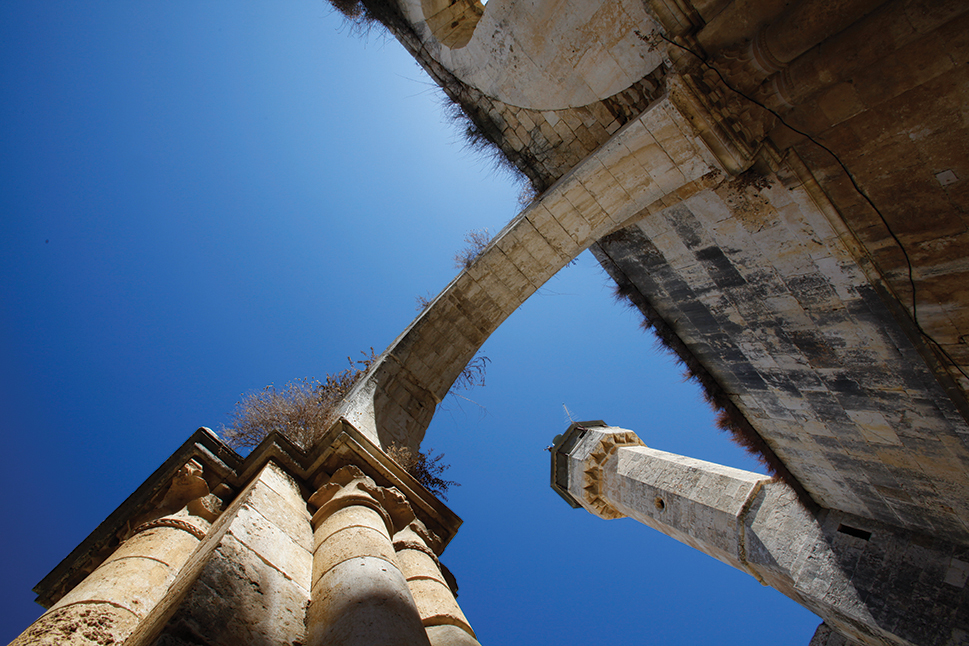
Ensuring the effective safeguarding and development of Palestinian cultural heritage sites presents many challenges. A main difficulty is the lack of a legal framework for the adequate protection of cultural heritage in Palestine. The only legislation in place at present is the Law of Antiquities, Article No.51 from 1966; this outdated law does not provide for the protection of any historic building built after 1700 AD. Since 2015, the Draft Palestinian Cultural Heritage Law has been a major object of joint work and of resource mobilization at UNESCO and the MoTA. Palestinian ministries, civil society organizations, academics, and individual experts have been involved in numerous meetings, workshops, and group discussions facilitated by the Ramallah office of UNESCO. Its national and international experts have prepared a common ground for the drafting of a new law that is to be comprehensive, aligned with national priorities and international conventions, and responsive to the needs of the local key stakeholders working in the field of heritage conservation and management. Finally, a draft Palestinian Tangible Heritage Law was prepared and submitted on 30 May 2017 by MoTA to the Palestinian cabinet for endorsement. This submission is a major step forward towards a modern Palestinian cultural heritage law that ensures better protection, management, and promotion of the country’s rich cultural heritage than the outdated laws that are currently in force. The draft law aims to prevent the illegal trafficking of cultural artefacts, while illustrating Palestine’s commitment to fulfilling the UNESCO conventions in the field of culture that it has ratified. The law drafting process has emphasized the strong relationship between the MoTA and UNESCO; the law was materialized with UNESCO’s technical and financial support to the ministry, in a cooperation that aimed to bring about an important, strategic policy change in the culture sector in Palestine.
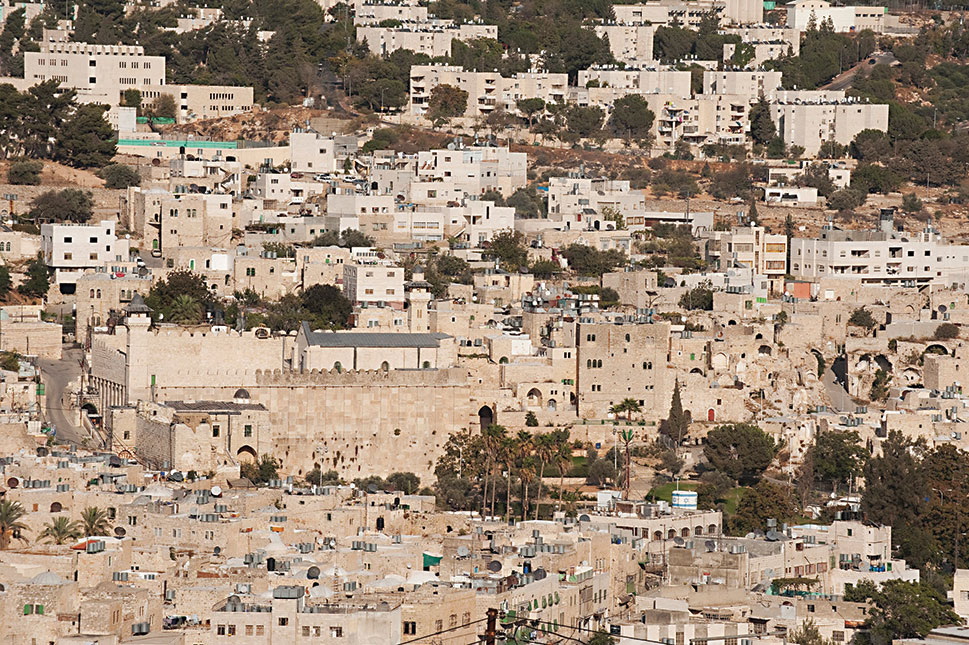
Yet, there is an increasingly urgent need for an improved legal and regulatory framework to be enacted, in light of the threats cultural heritage is facing through uncontrolled urban development in historic cities and villages, lack of community awareness, and natural decay as a result of climatic factors and inadequate preservation. Furthermore, since the Palestinian territory is experiencing serious fragmentation and the Palestinian population is increasing, while vacant land for urban expansion is diminishing, Palestinians are forced to inhabit their historic urban and rural centers. In many places, they have started to demolish their own heritage in order to increase revenues through new buildings. Without updated legislation for the protection of cultural heritage, all efforts to halt such threats against heritage will be in vain.
Despite this gloomy context, there are reasons to hope for change. For example, the protection and promotion of Palestinian cultural heritage is included in national development plans (both for 2011-2013 and 2014-2016) and in the National Policy Agenda (NPA) 2017-2022. Consequently, UNESCO has provided technical support to the ministry of culture and to the ministry of tourism and antiquities for the preparation of their (2017-2020) sector strategies towards culture and heritage, in line with the UN 2030 Agenda for Sustainable Development.
Palestine has ratified or accessed all six UNESCO conventions and protocols in the field of culture,iii and following the ratification of the World Heritage Convention, Palestine submitted the nomination files for “Birthplace of Jesus: Church of the Nativity and the Pilgrimage Route, Bethlehem” and for “Palestine: Land of Olives and Vines – Cultural Landscape of Southern Jerusalem, Battir.” In June 2012 and 2014 respectively, these sites were inscribed on the World Heritage List and the World Heritage List in Danger (due to factors affecting their state of conservation). Such recognition requires a rigorous approach to mapping and to the assessment of the state of conservation of a site, to ensure effective safeguarding for future generations. Therefore, UNESCO supported the MoTA both financially and technically in the preparation of integrated conservation, management, and action plans to assure effective protection and conservation for these sites.
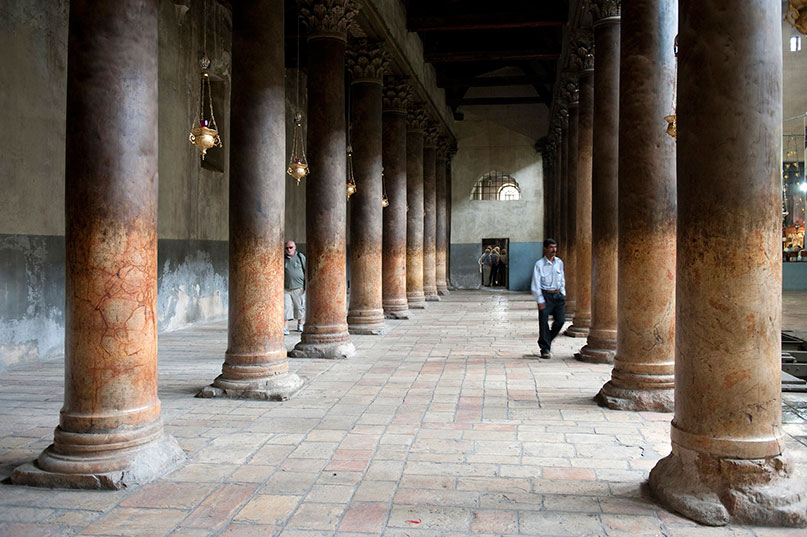
Furthermore, in order to assist the line ministries and other national authorities that are relevant to the development of policies and legal frameworks and to the effective implementation of the ratified conventions, UNESCO has provided a series of tailored capacity-development training courses on the Convention Concerning the Protection of the World Cultural and Natural Heritage (1972), the Convention on the Protection and Promotion of the Diversity of Cultural Expressions (2005), and the Convention for the Safeguarding of the Intangible Cultural Heritage (2003).
In the field of intangible cultural heritage, UNESCO, in close cooperation with the Palestinian Ministry of Culture (MoC), reviewed and updated the Draft Law on the Safeguarding of the Intangible Cultural Heritage. This law is in accordance with international normative instruments in the field of culture, ratified by Palestine, among them the Convention for the Safeguarding of Intangible Cultural Heritage. The draft law requires a final review by the MoC before its submission to the Palestinian cabinet for endorsement. Additional support in the fields of capacity development and community-based inventory is planned for the coming months.
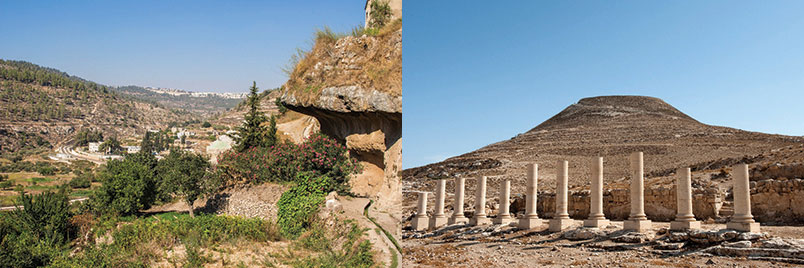
In the field of preserving and promoting cultural heritage in Palestine, important projects and initiatives have been implemented during the last four years to complement the role of the government. For example, thanks to funding from the Government of Sweden through the Swedish International Development Cooperation Agency (SIDA), UNESCO is implementing a project titled Local Development through the Rehabilitation and Revitalization of the Historic Built Environment in Palestine, working in cooperation with four Palestinian cultural heritage organizations. The project aims at enforcing local development and enhancing the socio-economic situation through the revitalization of cultural heritage assets. At present, 50 cultural heritage sites have been rehabilitated in historic centers, towns, and rural communities, including sites listed on the Tentative List of Palestine, such as “The Old Town of Hebron and its Environs” and “The Old Town of Nablus and its Environs.” Tell Balata Archaeological Park in Nablus can be mentioned here as well, as it is a successful example of how to turn a neglected cultural-heritage site into a well-preserved, managed, and visitor-friendly archaeological park with an increased potential for economic development; this was achieved through a fruitful partnership between the MoTA, University of Leiden, and UNESCO, with financial support from the Kingdom of Netherlands.
The ongoing Riwaya Museum project in Bethlehem, generously funded by Norway, aims to present to the public, via multimedia and interactive projects, stories and narratives associated with the history, beliefs, traditions, and customs of the people who inhabited Palestine. Once the renovation is completed and the museum provided with its contents, the site will provide an important facility in the Bethlehem area, attracting tourists and contributing to the socioeconomic development in the area.
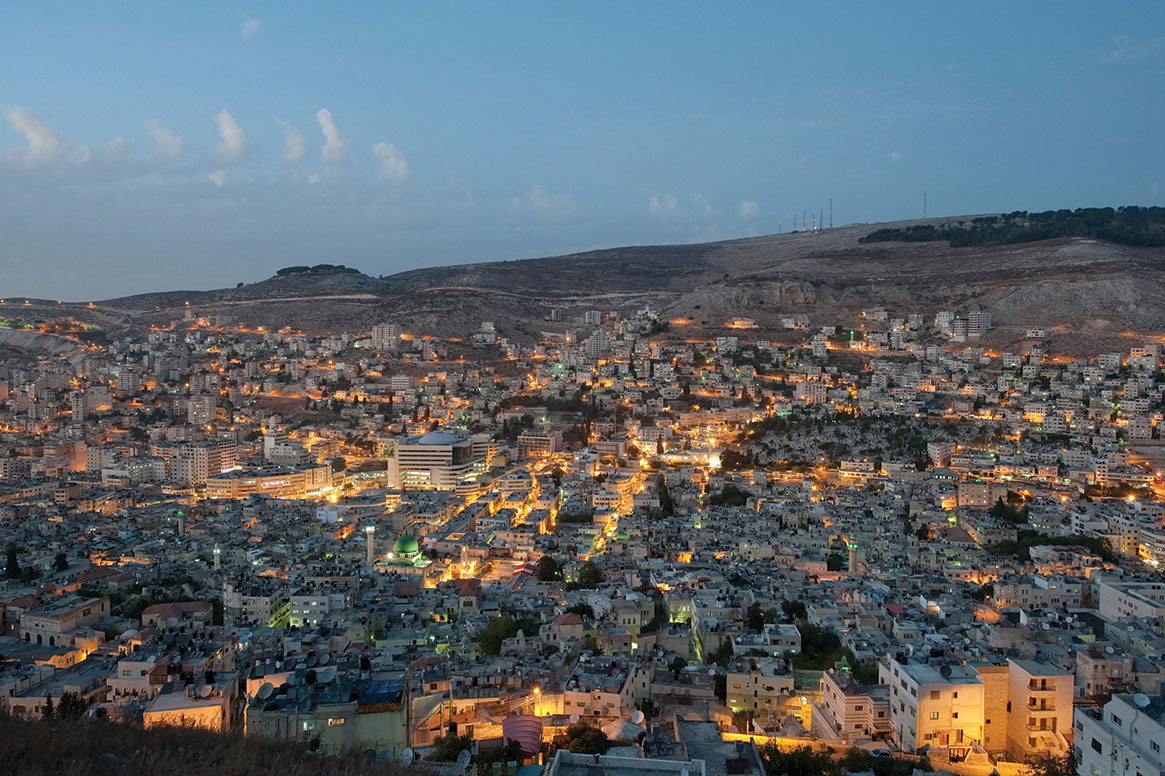
The Gaza Strip and its rich and unique cultural heritage continue to suffer dramatically from isolation, neglect, and lack of donor support. A Detailed Needs Assessment (DNA)iv for the culture sector in the Gaza Strip was carried out by UNESCO in cooptation with relevant stakeholders following the July-August 2014 conflict. DNA reported on 28 cultural heritage sites, 22 of which had been affected, with damages ranging from partial to total destruction. In addition, DNA reported on the loss of 33 cultural institutions, including their working instruments and tools. The total recovery needs in the culture sector for the coming three years were estimated at US$ 12.535 billion.
During the past four years, UNESCO has rehabilitated a number of cultural heritage sites, such as Al-Khader ancient Monastery and Shrine in Deir Al-Balah and As-Saqaa mansion in Shujahia; UNESCO has carried out emergency conservation measures at the archaeological site Tell Umm Amer/ Saint Hilarion Monastery in Nuseirat, and it continues to advocate the integrated protection, conservation, and management of this archaeological resource as a priority for the cultural development of the local communities living in the Gaza Strip. However, lack of financial support will hinder the repair, reconstruction, and recovery programs. If such lack of funding continues, damages to the cultural heritage in the Gaza Strip will constitute an irreversible loss for the identity of Palestinians and their future generations, and important resources for the economic and sustainable development of the Palestinian landscape will be lost.
The above-mentioned interventions are a few recent examples of projects implemented by UNESCO. They address a wide range of issues related to urban and landscape conservation, the conservation of historic buildings, the establishing of museums, and the revival of archeological sites. Progress has also been made in working with the Palestinian Authority and with civil society organizations on the development of policies, strategies, and a legal framework for the culture sector, in order to enhance the role of cultural heritage in the ongoing Palestinian development processes. This fruitful cooperation will be continued for the benefit of the Palestinian people who deserve to see their cultural and natural heritage safeguarded for future generations and promoted internationally.
i UN Educational, Scientific and Cultural Organization, Convention Concerning the Protection of the World Cultural and Natural Heritage, Decision 26 COM 6.1, paragraphs 4 and 5, available at http://whc.unesco.org/archive/2002/whc-02-conf202-25e.pdf.
ii Palestine Tentative List of World Heritage Sites, available at http://whc.unesco.org/en/tentativelists/state=ps.
iii These are the 1954 Convention for the Protection of Cultural Property in the Event of Armed Conflict with Regulations for the Execution of the Convention, (Accession 22 March 2012); the 1954 Protocol to the Convention for the Protection of Cultural Property in the Event of Armed Conflict, (Accession 22 March 2012); the 1970 Convention on the Means of Prohibiting and Preventing the Illicit Import, Export and Transfer of Ownership of Cultural Property, (Ratification 22 March 2012); the 1972 Convention concerning the Protection of the World Cultural and Natural Heritage, (Ratification 8 December 2011); the Second Protocol to the Hague Convention of 1954 for the Protection of Cultural Property in the Event of Armed Conflict, 26 March 1999 (Accession 22 March 2012); the 2001 Convention on the Protection of the Underwater Cultural Heritage (Ratification 8 December 2011); the Convention for the Safeguarding of the Intangible Cultural Heritage, (Ratification 8 December 2011); the 2005 Convention on the Protection and Promotion of the Diversity of Cultural Expressions, (Ratification 8 December 2011).
iv The full DNA assessment and Recovery Framework is available at http://www.lacs.ps/documentsShow.aspx?ATT_ID=21974


